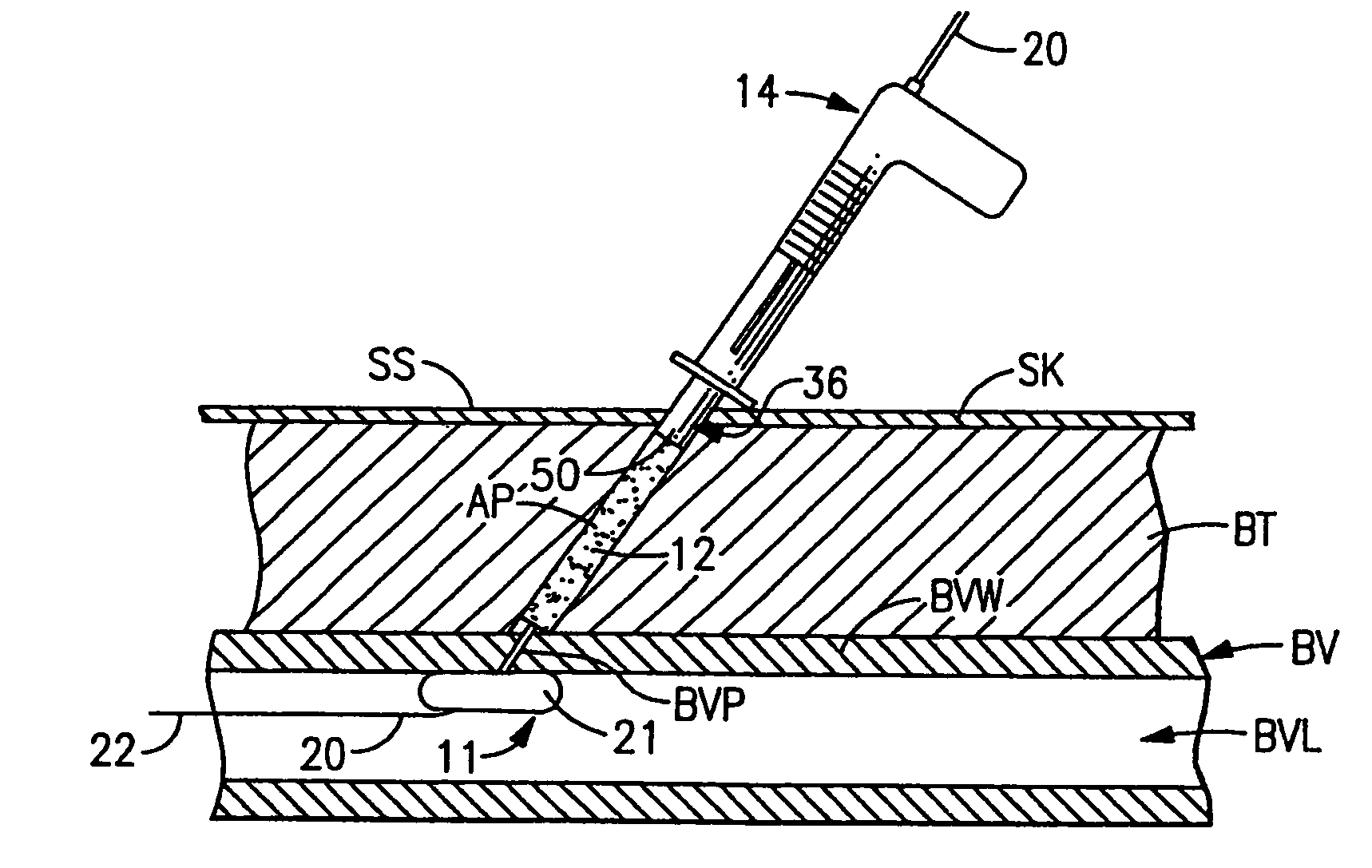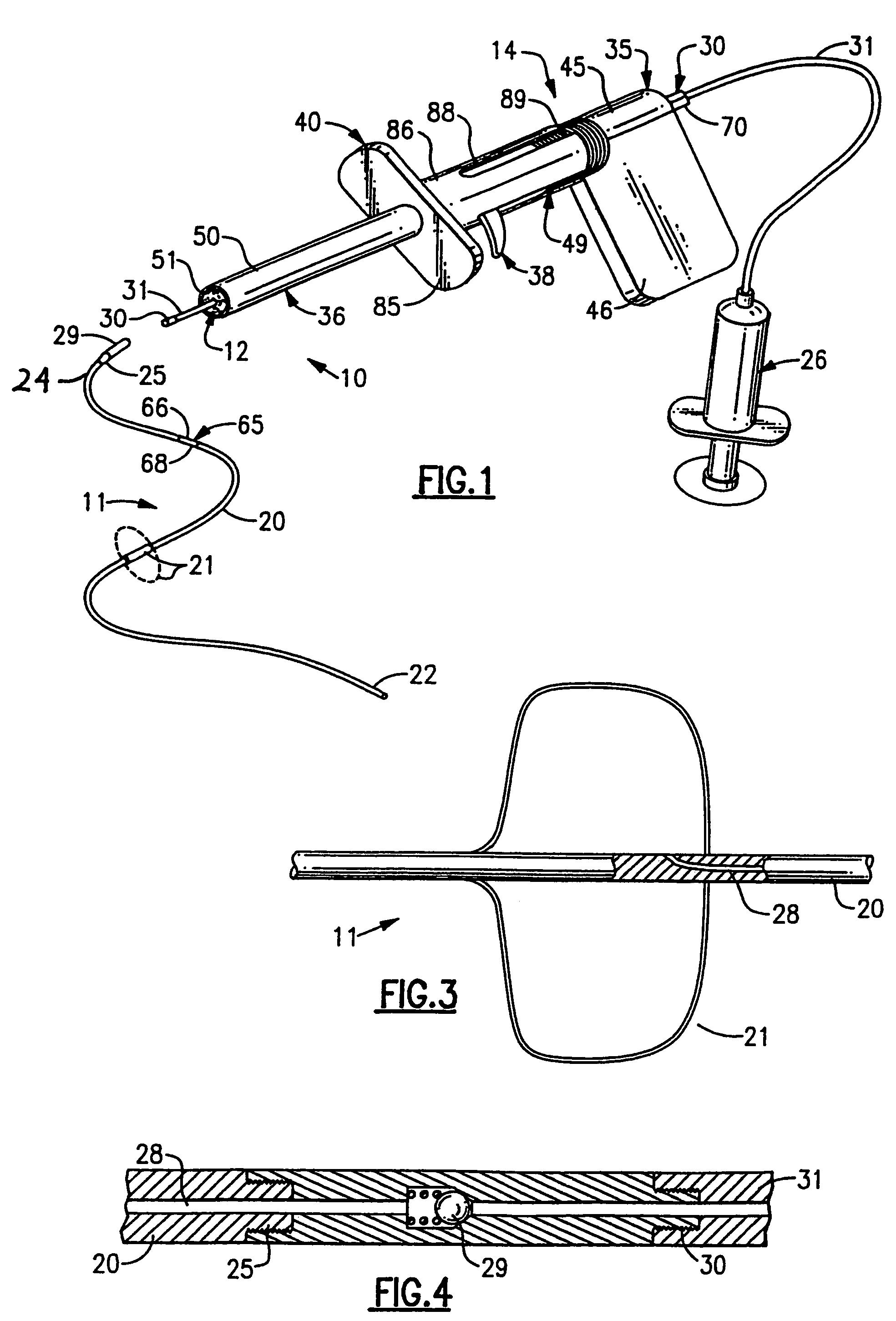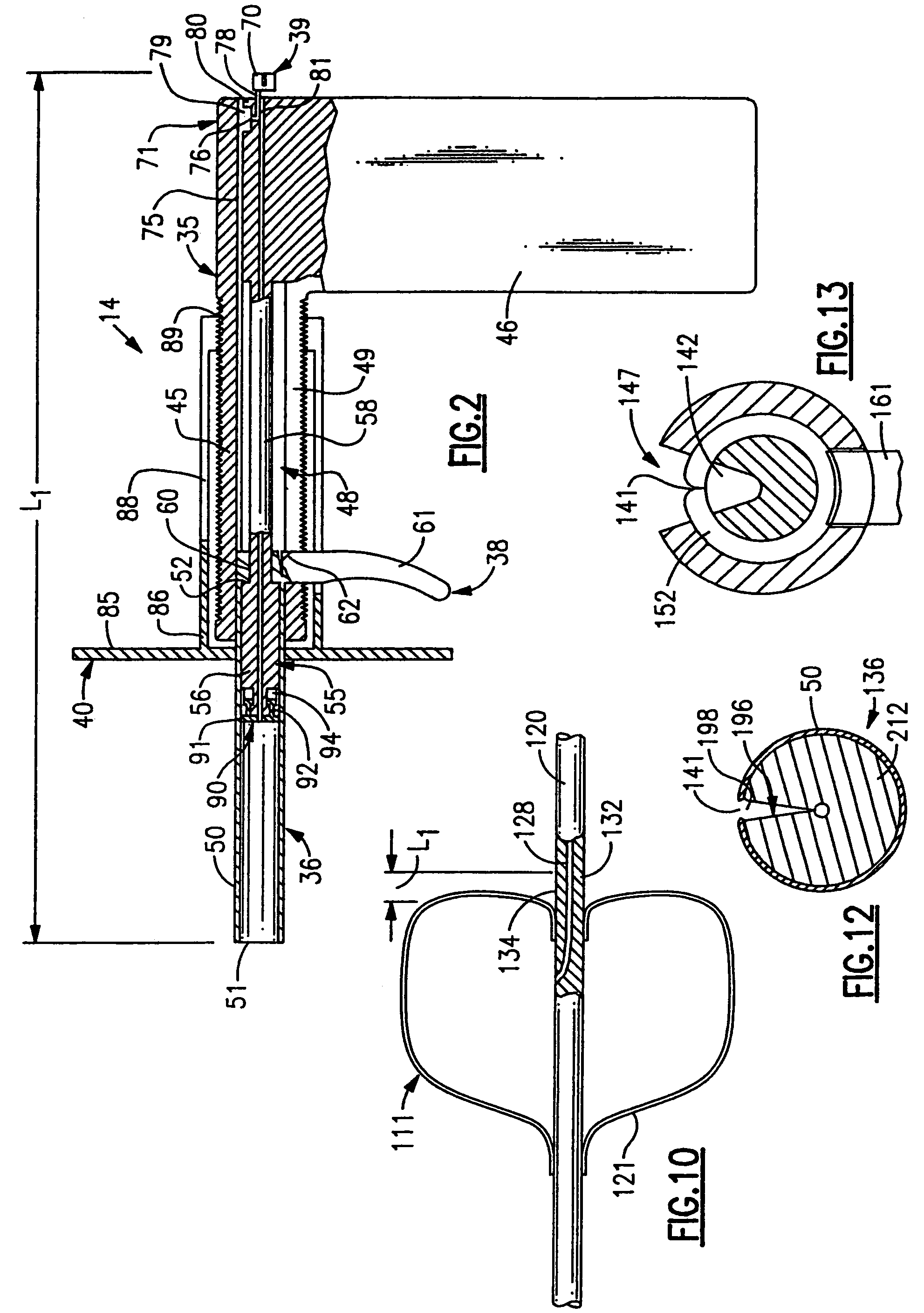Blood vessel sealing system
a sealing system and blood vessel technology, applied in the field of blood vessel sealing system, can solve the problems of blood clots in no practical way to positively limit the protrusion of collagen into the interior of the blood vessel, and the reclosure of the opening in the blood vessel wall, and achieve the effect of accurate positioning and simple us
- Summary
- Abstract
- Description
- Claims
- Application Information
AI Technical Summary
Benefits of technology
Problems solved by technology
Method used
Image
Examples
second embodiment
of Applicator
[0047]The second embodiment of the applicator is designated 114 and is illustrated in FIGS. 11-15. The basic difference between the applicator 114 and the applicator 14 is that the applicator 114 has an open section through which the control member on the temporary sealing assembly can be installed without feeding the control member axially through the collagen plug and applicator. The applicator 114 like the applicator 14, includes a housing assembly 135, and introducer assembly 136, a retraction mechanism 138, an interconnect assembly 139, and a locator mechanism 140. These assemblies and mechanisms operate similarly to the corresponding assemblies and mechanisms of the first embodiment of the invention.
[0048]The cylindrical body 145 defines a V-shaped cutout 147 therein down to the passage through which the control member on the temporary sealing assembly passes so that control member can be laid into the passage as it is being operated to install the collagen plug. ...
third embodiment
of the Invention
[0050]FIGS. 16 and 17 illustrate a third embodiment 210 of the invention which includes a collagen plug 212 and an applicator tube 214. The collagen plug 212 is installed on the control member and the extension 31 to the syringe 26 as described with the first embodiment of the invention. The applicator tube 214 is a cylindrical tube defining a central passage therethrough to just slidably receive the control member of the temporary sealing arrangement. The physician simply slides the collagen plug 212 and the tube 214 onto the control member of the temporary sealing arrangement so that the leading end of the collagen plug 212 faces the access passage AP in the patient. The physician then uses the applicator tube 214 to push the collagen plug 212 down to the outside end of the puncture BVP. The combined overall length of the collagen plug 212 and the applicator tube 214 corresponds to that of the first embodiment of the invention so that the physician can use the indi...
fourth embodiment
of the Applicator
[0052]FIG. 18 illustrates an alternate embodiment of the applicator which has been designated by the reference of 314. The applicator 314 include an insertion barrel 150 with the projecting end 351 thereon adapted to be inserted into the access passage AP in the patient. The barrel 350 defines an internal passage therethrough adapted to slidably receive the collagen plug 12 therein. A one-way check member 353 is mounted in the barrel 350 behind the plug 12 and has a face thereon abutting the plug 12 to maintain it lengthwise of the barrel 350 as will become more apparent. The check member 353 defines a tamponading member receiving chamber 352 which opens onto the trailing end of the plug 12 and trailing end of the check member 353 is provided with a one-way gripping assembly 354 which grips the control member of the temporary sealing arrangement to allow the check member 353 to be moved along the control member toward the expanded tamponading member but prevents mov...
PUM
 Login to View More
Login to View More Abstract
Description
Claims
Application Information
 Login to View More
Login to View More - R&D
- Intellectual Property
- Life Sciences
- Materials
- Tech Scout
- Unparalleled Data Quality
- Higher Quality Content
- 60% Fewer Hallucinations
Browse by: Latest US Patents, China's latest patents, Technical Efficacy Thesaurus, Application Domain, Technology Topic, Popular Technical Reports.
© 2025 PatSnap. All rights reserved.Legal|Privacy policy|Modern Slavery Act Transparency Statement|Sitemap|About US| Contact US: help@patsnap.com



